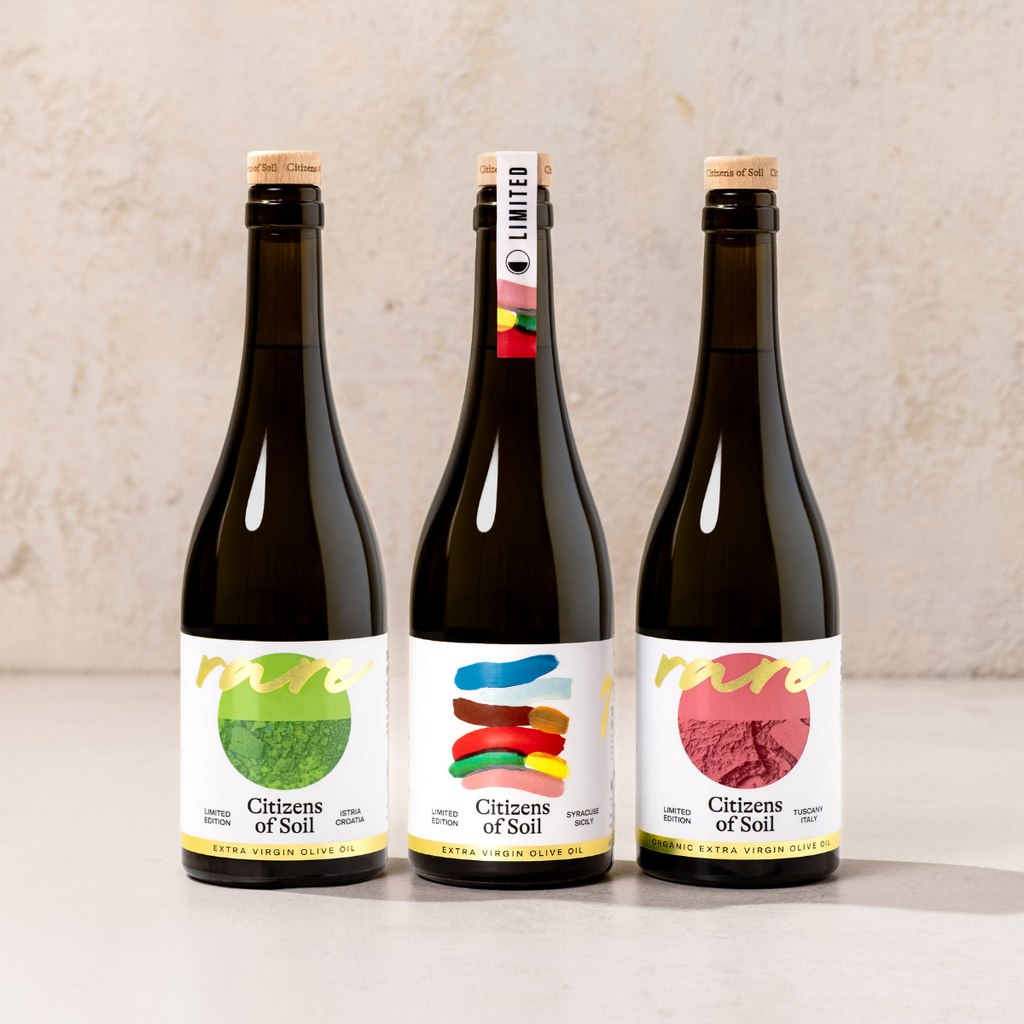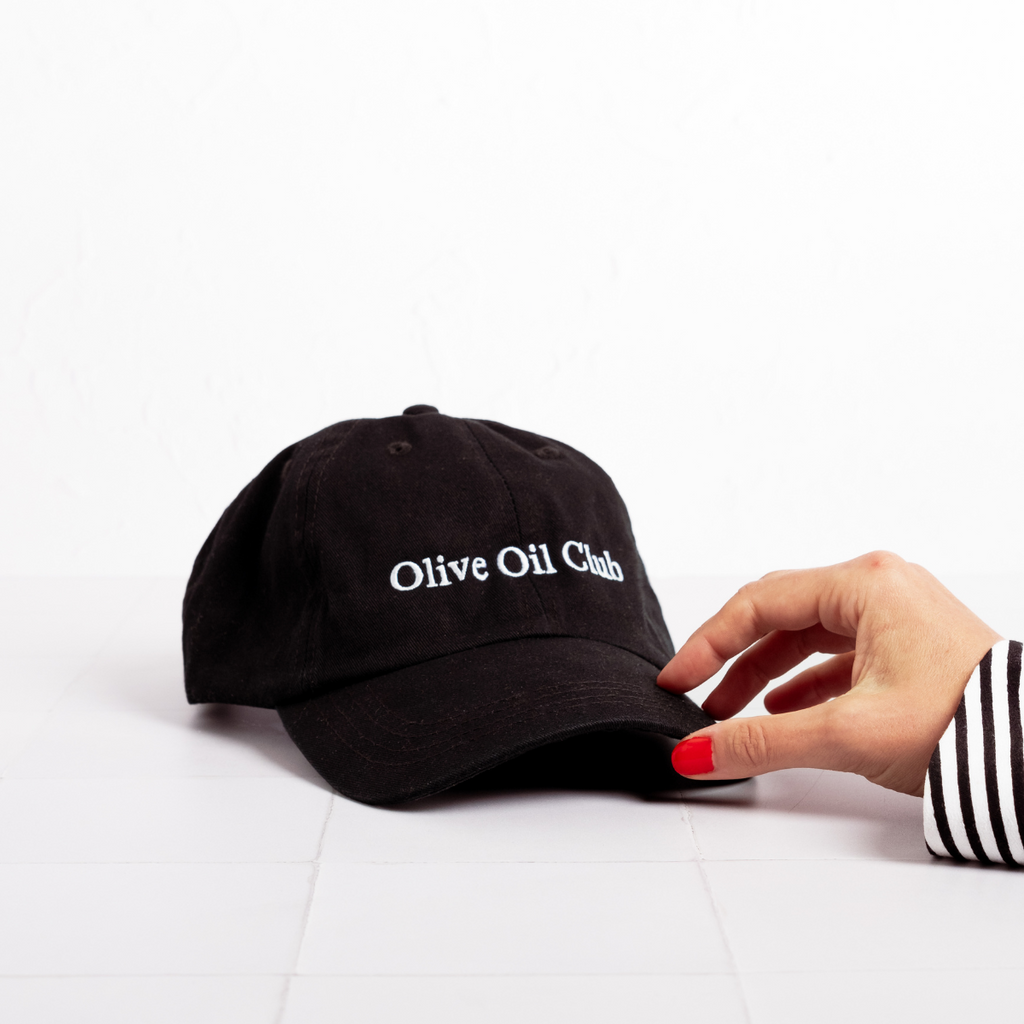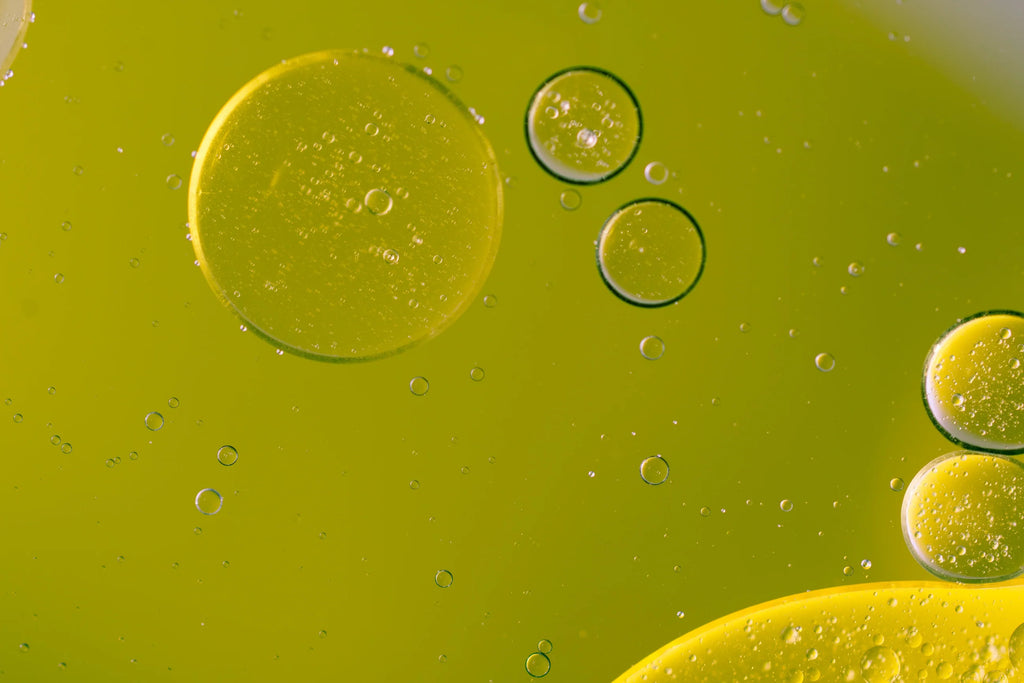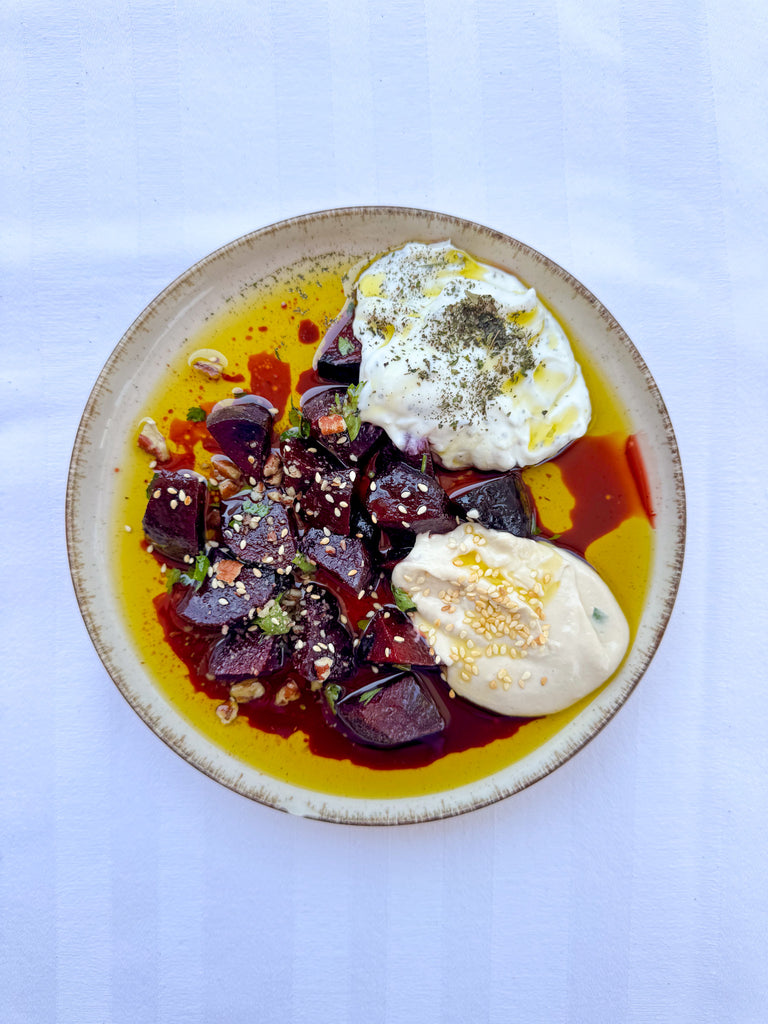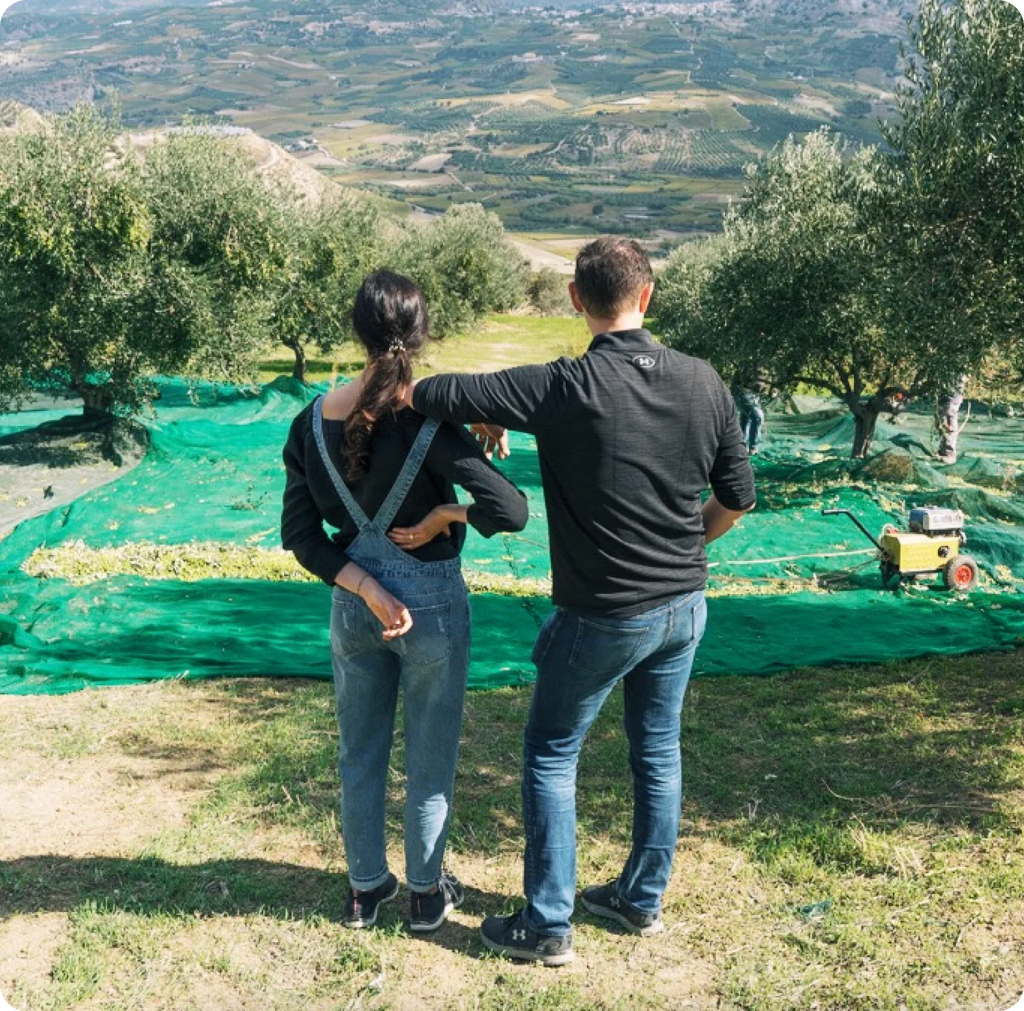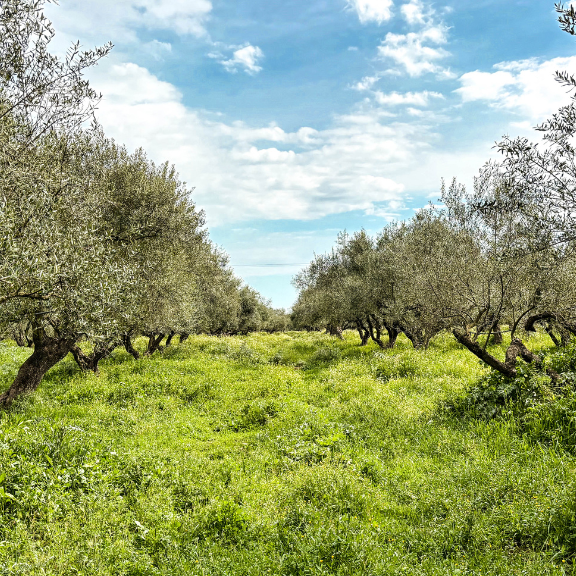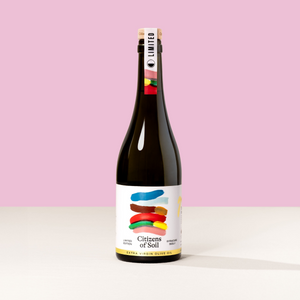The art of the aperitivo: fresh ideas with EVOO at the heart.
Do you hear that? It’s the summer season, nipping at the heels of spring. Birds are chirping, flowers are in constant bloom, and that outdoor table filled with good food, drinks, and company is calling your name. It’s all part of the recipe for a perfect golden hour aperitivo.

But what really are the ingredients for the ideal, sun-dappled, breezy, and delicious outdoor affair? We’re going to dive into all things aperitivo. What it is, how it got started, and how extra virgin olive oil pulls it all together.
What is aperitivo?
Right. It’s a rather loaded question! And one that we plan to fully tackle.
The aperitivo is a beloved Italian tradition that conjures up all sorts of warm fuzzies. It’s a pre-dinner ritual that blends good drinks, light bites, and great company. It typically takes place in the early evening and serves to gently awaken the appetite before the main meal. More than just a snack or a happy hour, though, aperitivo is a social moment, a pause in the day to slow down, connect, and enjoy la dolce vita.

The origins of aperitivo.
The tradition of the aperitivo has ancient roots, dating back to Roman times, when physicians recommended wine infused with herbs as a way to ‘open’ the stomach before eating. But the Italian aperitivo as we know it began to take shape in the late 18th century in Turin, when Antonio Benedetto Carpano created the modern version of vermouth, which is an aromatized wine flavoured with botanicals.
His invention quickly gained popularity as a pre-meal drink among the city’s elite, and the idea of pairing such drinks with small bites gradually evolved into a cultural ritual. Over time, the tradition spread across Italy, taking on slightly different forms in different regions—from the chic spritz bars of Milan to laid-back seaside cafés in the south. What began as a medicinal idea transformed into a celebrated moment of daily indulgence—equal parts social, culinary, and cultural.
The perfect time for an aperitivo.
In Italy, aperitivo time begins when the workday winds down and the evening begins to stretch out—usually between 6pm and 8pm. It’s not quite dinner, but it’s more than just a drink. It’s that sweet spot in the day when people transition from productivity to pleasure.
And it’s rather necessary given that Italians tend to eat dinner late, often around 8:30pm or later, especially in the summer months. So the aperitivo serves as a flavourful bridge: enough to take the edge off your hunger without spoiling your appetite for the meal to come.
The aperitivo in other countries.
It’s worth noting that ‘aperitivo’ is not exclusive to Italy. The word itself comes from the Latin aperire, meaning ‘to open’, and similar pre-meal customs exist across Europe. In Spain, for example, the term aperitivo is also used—but it refers to a midday ritual before lunch, often featuring a glass of vermouth (surprise, surprise!) and small salty snacks. France has its apéritif, Greece and Turkey have mezé (mezze), and each culture adds its own flavour and rhythm to the idea of warming up for a meal.
Still, when most people refer to ‘the aperitivo’, they’re usually thinking of the Italian version—stylish, relaxed, and full of spritzes and small plates in the glow of early evening. That’s the one we’ll explore today.
In any case, there are still several things they all have in common, such as small plates, good company, local ingredients, and a touch of bitter to wake up the taste buds. So let’s examine these important, not-to-be-missed components that you’ll want to weave into your list of aperitivo ideas.

High-quality, local ingredients are the star.
At its core, the aperitivo isn’t about complexity; it’s about simplicity done right. What elevates this pre-dinner ritual from casual snack to cultural art form is the unwavering focus on exceptional ingredients and food. Every element on the table, from the saltiest olive to the crunchiest breadstick, is carefully chosen for its quality, freshness, and character.
It’s no coincidence that the best aperitivo spreads often feel deeply regional. In Italy, that might mean paper-thin slices of local prosciutto, fresh seasonal vegetables, or a wedge of a cheese made just down the road. In Spain, it could be foods like anchovies from the Cantabrian coast or Marcona almonds from the Mediterranean interior. Wherever you are, what’s nearby and in season is a solid choice.
There’s no need for heavy sauces or elaborate recipes, either. The ingredients really steal the show. When they’re grown, produced, or harvested with care, they don’t need much more than a pinch of salt, and probably a good drizzle of extra virgin olive oil, to come fully alive.
Bitterness: the secret essential flavour.
Remember how aperitivo comes from the Latin aperire, meaning ‘to open’? As in, to open your appetite? There’s a not-so-obvious, but absolutely essential, flavour that helps do just that: bitterness.
We’re often taught to shy away from bitter flavours. We associate them with something gone wrong: burnt toast, over-brewed coffee, too-dark chocolate. But in the world of the aperitivo, bitterness is a good thing. It stimulates the senses, nudges the appetite awake, and brings balance to both drinks and bites.
That’s why iconic aperitivo staples like Campari, vermouth, and Aperol lean into that bitter edge. And it’s why the accompanying nibbles—green olives, citrus zest, salted nuts, artichokes, even slivers of bitter greens—are designed to echo or contrast those sharp, complex notes.
And, of course, that same appetite-awakening bitterness shows up in another food staple of the Italian table—extra virgin olive oil.

How olive oil can elevate your aperitivo.
At the heart of the aperitivo lies a simple philosophy: quality over quantity. The best bites aren’t elaborate, they’re simply elemental. But what transforms these humble ingredients into something memorable is often the same thing that anchors the entire experience: high-quality extra virgin olive oil.
Good olive oil does more than just coat or drizzle. It connects and lifts flavours, rounds out acidity, softens salt, and—importantly—adds its own subtle bitterness that mirrors the aperitivo’s signature flavour profile. Beyond taste, there are plenty of well-documented olive oil health benefits, making it a delicious and nutritious idea for an aperitivo.
You’ll find it on sliced focaccia, drizzled over cured meats, pooled beside hard cheeses, even stirred into cocktails or brushed across citrusy desserts. Whether it’s an intense, peppery Italian olive oil or a vibrant, fruity Spanish olive oil, choosing a high-quality regional extra virgin olive oil can transform even the simplest bites into something truly memorable. In an aperitivo spread, it’s the quiet thread that ties every element together.

Cheers to your olive oil-inspired aperitivo.
With that, set the table, pour something bright, and drizzle generously. The art of the aperitivo is all about slowing down, savouring the moment, and letting simple, high-quality ingredients shine. With extra virgin olive oil tying every bite together, all that’s left is good company and the golden hour light.
Shop the blog


